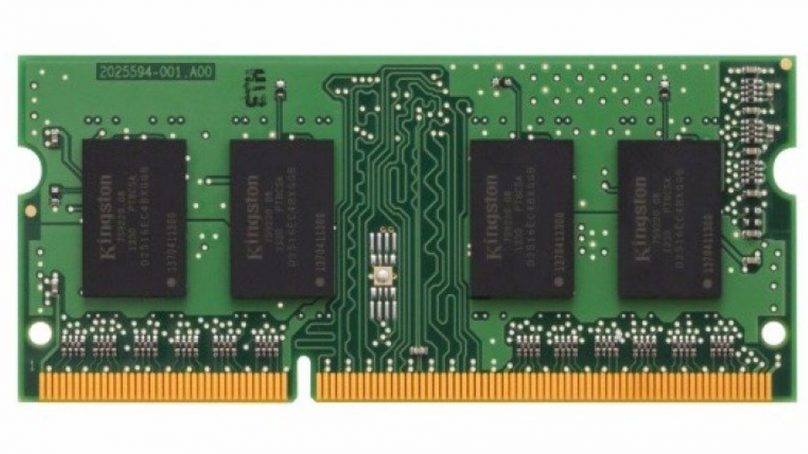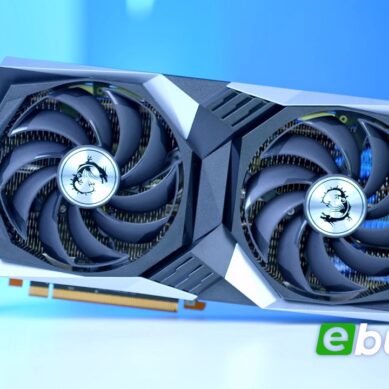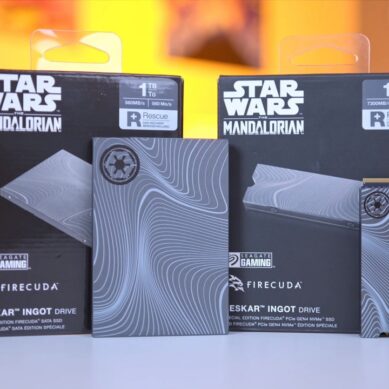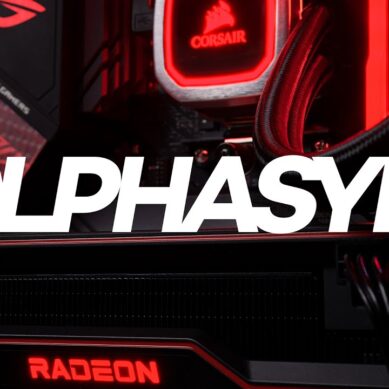
The quality of your memory can create a considerable bottleneck in your system’s performance. Even the fastest processor won’t be able to perform if it can’t retrieve and store data in memory quickly enough. The current standard for system memory is DDR4, which comes in robust DIMM sticks that slot easily into your motherboard. System memory of this sort is an obvious candidate for an upgrade: you won’t need to mess around removing heat sinks, and since you can slot new RAM alongside the old stuff, you aren’t throwing any of it away.
DDR4 is a mature technology. It’s widely-supported and inexpensive in a way that its successor, DDR5, won’t be for several years (it’s not even out until 2020). As such, it’s the only choice if you’re thinking of putting a system together. Let’s compare five candidates for a RAM upgrade.
Crucial Ballistix Elite
+ Great performance for the price
+ High-quality heat spreader
– Looks a little dull
These sticks offer a considerable 2666 MT/s (mega-transfers per second). Crucially, RAM of this sort will deal with significant spikes in demand, helping to avoid the juddering you might experience when certain games need to load in lots of assets at the same time (such as when you first load into a level).
This kit weighs in a well under a tenner per GB, and comes with functional black looks that’ll sit nicely in just about any case. While it lacks the RGB-lighting capabilities found on the other sticks in this round-up, it’s functional and worth a look. The two-stick setup makes a great match for either dual or quad-channel motherboards.
Corsair Vengeance LPX
+ Low latency
+ Faster clock
– A little pricier
This kit from Corsair takes things up a notch, offering slightly lower C15 latency and a quicker clock speed of 3000MHz. What this means in practice is that the memory will release data just slightly more quickly whenever the CPU asks for it. These differences are measured in nanoseconds, so they’re not something you’re likely to notice until it becomes a problem – but if you can afford lower, it’s always better to go for it. The difference will begin to tell when the other parts of your system start to perform faster than your memory can deal with the data.
Clock speed, on the other hand, is more comprehensible. Given that most motherboards, Intel and AMD, can support memory speeds in excess of 2666MHz out of the box, it makes sense to leverage the extra power if you’re building a more expansive system. Like the Crucial memory we’ve just looked at, this offering from Corsair doesn’t come with any fancy lighting options, but it does sport an aluminium heat sink that provides passive cooling for the underlying chips. This in turn will support more generous headroom for overclockers.
HyperX FURY
+ Cheap and cheerful
+ Automatic overclocking
+ Low profile
This CL15 memory comes with an intelligent overclocking functionality. Plug it into your motherboard and it’ll automatically overclock to the highest supported frequency (up to a maximum of 2666MHz). It’s an excellent match for those who want to extract maximum performance from their memory without having to spend too much time tinkering with UEFI settings. This set comprises a single stick of 8GB; buy two of them and you’ll still get considerable value at just over £60 each. As with the other sticks we’ve mentioned, this one comes in a low-profile black package that’ll keep things neat and tidy, and provide maximum room inside your case.
+ Support for RGB zoning
+ Automatic overclocking
– Pricey
This RAM is distinct from the others we’ve mentioned thus far in that it comes with five customisable RGB zones on each stick. As such, it’ll offer scope to brighten up your interior as well as bolstering performance. The LEDs complement the reflective aluminium heat shields nicely.
The performance is there to match the looks, too; there’s support for XMP 2.0, which means automatic overclocking up to 2666MHz. If you’re looking to add some flair to the interior of your case while making the on-screen results that little bit more impressive, this set is an obvious choice. You can, however, expect to pay a little more for the privilege – this RGB set weighs in at the same price as the faster Corsair memory we’ve already looked at, and so if looks aren’t important to you, we’d suggest going for the blander-looking, faster memory.
Crucial Ballistix Tactical Tracer
+ Eight RGB Zones
+ Excellent monitoring via Ballistix software
– Again, you’ll pay a premium
Another member of Crucial’s Ballistix line-up, here, this time helped with the addition of 16 LEDs across the top, split into eight independently-addressable zones. With their help, you’ll be able to create independent lighting patterns – and if you’ve got access to a 3D printer and some transparent filament, you’ll be able to create a bar entirely unique to you.
Performance-wise, this kit isn’t too shabby, either, with impressive speeds of up to 3000 MT/S more than achievable. You’ll also have access to sophisticated XMP profiling functionality through which you’ll be able to tweak your speeds and timings to squeeze maximum performance from your rig. Crucial’s Ballistix MOD (Memory Overview Display) software provides close-up monitoring of clock speed and temperature via an internal sensor, allowing you to dial things up when your games demand it. With that said, you can expect to pay a slight premium for this extra functionality – and not everyone will consider the trade-off worthwhile.
Shopping for RAM is a little trickier than shopping for other components, as the real-world implications of memory speeds and CAS latencies are more difficult to anticipate. We’d suggest that if you’re playing high-end games and you want to be prepared for the future, a gaming rig requires 16GB of 2666MHz RAM. The sort you choose will depend on how much you’ve budgeted, and the motherboard you’re going to strap it into.






